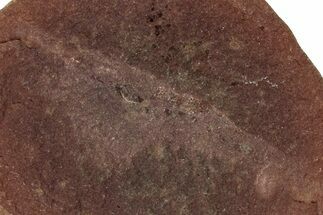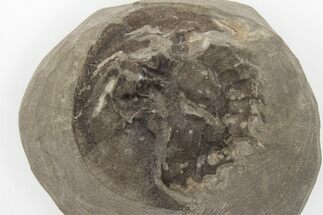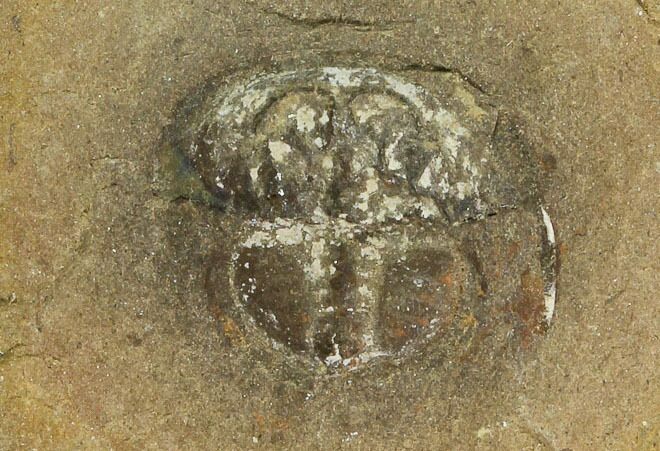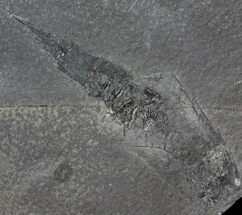This Specimen has been sold.
Rare, .6" Fossil Horseshoe Crab (Euproops) Pos/Neg - Mazon Creek
This is a .6" fossil horseshoe crab (Euproops danae) from the Carbondale Formation near Essex. Illinois. It is preserved in an ironstone nodule and contains both the positive (convex) and the negative (concave) halves of the fossil.
Horseshoe crabs are arthropods of the Family Limulidae, Order Xiphosura. They evolved during the Ordovician Period, about 450 million years ago. The oldest fossil was found in Manitoba, Canada and was 445 million years old. Though some species of horseshoe crab have become extinct, there are four species alive today.
Horseshoe crabs often look like round-nosed battle tanks, but at least one group of researchers thought one fossil found in Idaho looked like Darth Vader (they even named its genus Vaderlimulus!). Their shells cover their entire bodies except for two small eyes on top of the shell, another six around the edges of the shell, and a thin tail sticking out the back. Living horseshoe crabs are grey, green and brown to blend in with the seafloors they scavenge.
You might think horseshoe crabs are closely related to regular crabs, but they are actually more closely related to spiders. Like spiders, horseshoe crabs do not have mandibles for grinding food: instead, they have two appendages for moving food into the mouth.
Horseshoe crab fossils have been found worldwide, including Siberia, Lebanon, Spain, Morocco, Canada, and the US. Solnhofen, Germany produces most of the commercially available horseshoe crab fossils.
Horseshoe crabs often look like round-nosed battle tanks, but at least one group of researchers thought one fossil found in Idaho looked like Darth Vader (they even named its genus Vaderlimulus!). Their shells cover their entire bodies except for two small eyes on top of the shell, another six around the edges of the shell, and a thin tail sticking out the back. Living horseshoe crabs are grey, green and brown to blend in with the seafloors they scavenge.
You might think horseshoe crabs are closely related to regular crabs, but they are actually more closely related to spiders. Like spiders, horseshoe crabs do not have mandibles for grinding food: instead, they have two appendages for moving food into the mouth.
Horseshoe crab fossils have been found worldwide, including Siberia, Lebanon, Spain, Morocco, Canada, and the US. Solnhofen, Germany produces most of the commercially available horseshoe crab fossils.
SPECIES
Euproops danae
LOCATION
Essex, Illinois
FORMATION
Carbondale Formation
SIZE
.6" crab, 1.4 x 1.2" nodule
CATEGORY
SUB CATEGORY
ITEM
#120874
We guarantee the authenticity of all of our specimens.
 Reviews
Reviews














